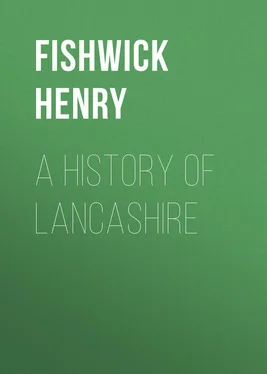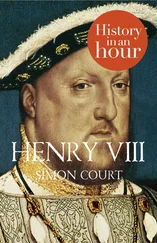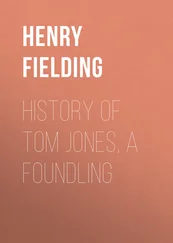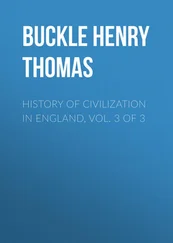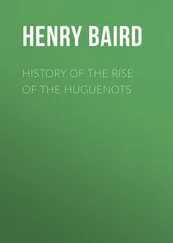Henry Fishwick - A History of Lancashire
Здесь есть возможность читать онлайн «Henry Fishwick - A History of Lancashire» — ознакомительный отрывок электронной книги совершенно бесплатно, а после прочтения отрывка купить полную версию. В некоторых случаях можно слушать аудио, скачать через торрент в формате fb2 и присутствует краткое содержание. Жанр: foreign_antique, foreign_prose, на английском языке. Описание произведения, (предисловие) а так же отзывы посетителей доступны на портале библиотеки ЛибКат.
- Название:A History of Lancashire
- Автор:
- Жанр:
- Год:неизвестен
- ISBN:нет данных
- Рейтинг книги:4 / 5. Голосов: 1
-
Избранное:Добавить в избранное
- Отзывы:
-
Ваша оценка:
- 80
- 1
- 2
- 3
- 4
- 5
A History of Lancashire: краткое содержание, описание и аннотация
Предлагаем к чтению аннотацию, описание, краткое содержание или предисловие (зависит от того, что написал сам автор книги «A History of Lancashire»). Если вы не нашли необходимую информацию о книге — напишите в комментариях, мы постараемся отыскать её.
A History of Lancashire — читать онлайн ознакомительный отрывок
Ниже представлен текст книги, разбитый по страницам. Система сохранения места последней прочитанной страницы, позволяет с удобством читать онлайн бесплатно книгу «A History of Lancashire», без необходимости каждый раз заново искать на чём Вы остановились. Поставьте закладку, и сможете в любой момент перейти на страницу, на которой закончили чтение.
Интервал:
Закладка:
Many inscribed stones have been found on the site of this castrum , which originally were built into the wall; one is noticed by Camden, which read:
i. e. , Centuria Candidi, Pedes xxiiii.
Another bore the inscription:
20 20 The late Mr. Thompson Watkin maintains that the N at end of the first line should be AV.
– which may be translated into, “The century of Masavo of the first cohort of the Frisians [built] 23 feet.”
The Frisii were inhabitants of Gaul, who were frequently at war with the Romans, but towards the end of the first century, though they were not actually under Roman rule, they had agreed to contribute men for the imperial army; hence their presence in Lancashire.
There have been other centurial stones found near the Manchester settlement which are of considerable interest. One was discovered in 1760 on the south side of the Medlock, near Knott Mill; all that remains of the inscription is:
The other centurial stone was found in 1796. It measures 15 inches by 11. It had inscribed upon it:
The translation would be, “The century of Quintianus, of the first cohort of the Frisians, [built] 24 feet.” This stone was found near to one of the gateways to the castrum . A tile inscribed to “The twentieth legion, valiant and victorious,” was found in 1829, and two others, bearing the words (when extended) Cohortis III. Bracarum . A small portion of the wall of a building within the castrum is still preserved; a great portion of it consists of fragments of unhewn red sandstone.
In 1612, under the roots of an oak–tree, near to the Roman side, was found part of an inscribed altar. It was much mutilated, and had probably been built into a wall after the departure of the Romans. It is 27½ inches in height, 15½ inches in breadth, and nearly 11 inches thick. This altar passed through many hands, and its whereabouts is now unknown, but a copy of the inscription on its face has been preserved. It was dedicated to “Fortune the preserver, Lucius Senecianius Martius, a centurion of the Sixth Legion, (surnamed) the Victorious.” This legion was stationed at Eboracum (York), A.D. 120.
Another altar (or, rather, a part of one) was found in Castlefield. It was of red sandstone, and was 2 feet 5 inches high. It is now preserved at Worsley New Hall. Its inscription may be rendered as, “To the god … Præpositus of the Vexillation of Rhætii and Norici performs his vow cheerfully and willingly to a deserving object.” This inscription therefore informs us that part of the garrison of Mancunium consisted of a body of soldiers belonging to the Rhætii and Norici; the former came from Switzerland, and the latter were Tyrolese. This is remarkable as the only description yet discovered in Britain which thus refers to these troops. The amount of pottery discovered has not been large, but amongst it were some fragments of Samian ware, on one of which is a representation of a hunting scene. Samples from the Roman potteries of Upchurch have also been dug up, but none of them bear the maker’s name.
About two miles from the castrum , in the bed of the river Irwell, was found in 1772 a golden ornament for the neck (a bulla), which was richly ornamented; along its upper border was a hollow tube through which to pass the cord by which it was suspended round the neck of the wearer. Only one other specimen of this kind of ornament in gold has been found in England, and that also was in Lancashire (in Overborough). Within the area of the castrum various minor remains have from time to time been discovered, including a massive gold ring, coins, urns, tiles, spear–heads, household gods, and Roman pottery. 21 21 “Palatine Note–Book,” iii. 67.
Amongst the coins were many of the reigns of Trajanus (A.D. 53–117), Hadrianus, Antoninus Pius, and Marcus Aurelius; 22 22 For full details of these see Watkin’s “Roman Lancashire.”
they were all found in or near what is still known as Castlefield.
Around this Roman stronghold something approaching a town was no doubt built, if, indeed, the conquering forces did not find some such settlement existing on their arrival. From the evidence of the remains found, this suburban quarter was mostly on the north of the castrum . In Tonman Street, in 1839, was discovered a bronze statuette of Jupiter Stator. Remains of domestic building have frequently been met with, and the site of the cemetery lying on the south–east side of the station is indicated by the numerous sepulchral urns discovered there, as well as human bones and lachrymatory vessels of black glass. Judging solely from the remains which are known to have been found here, the conclusion we must arrive at is that, important as Mancunium was as a military centre, the village or town around its castrum was not as important as that of Ribchester.
The dates of the various coins recorded (many more have been found but not recorded) clearly show that the Romans were settled at Mancunium from about A.D. 80 to the time when they left the country.
Traces of a road have been found between Manchester and Wigan, and the latter place was certainly a Roman station, though it has not been satisfactorily proved to be identical with the Coccium named in the tenth Iter of Antoninus. In 1836 the ditch and agger by which the station was fortified were still visible near the crown of the hill on which part of Wigan now stands. 23 23 Archæological Journal , xxviii., p. 114, and xxx., p. 153.
Many Roman coins and urns have been found near the station, and a stone built into the present parish church is considered to have been a portion of a Roman altar. From Wigan the road went north and south.
Returning to Manchester: from this centre issued another road going in a straight line to Ribchester; it passed across Campfield and the site of what is now the Victoria railway–station; it went on to Prestwick, Lower Darwen, Blackburn, and finally to the bank of the Ribble near Ribchester; the remains of the road have been seen nearly over the whole of its length. It is not thought to be quite so ancient as the other roads out of Mancunium; 24 24 Watkin’s “Roman Lancashire,” p. 55.
however this may be, at Bremetonacum (Ribchester) was erected the largest castrum in the whole county.
Roman Ribchester was probably founded by the Emperor Agricola or by Hadrian.
Like nearly all the large stations, it was placed near to a river, and in this case the Ribble served as the fosse on the south–eastern side; its other boundaries have been clearly defined, the outline of fosse and vallum being still quite apparent, and within its limits are included the parish yard and Vicarage garden: its total area covers about ten statute acres. Its dimensions are: from the vallum on the north–west to the bed of the river 615 feet, and from the vallum on the south–east to that on the opposite side 611 feet. The corners on the north and north–east are rounded off, the southern ones being lost in the bed of the river, which has considerably altered its course.
At the angle pointing north, in 1888, a gateway was discovered. 25 25 Through the influence of the Rev. J. Shortt, Vicar of Hoghton, whose description of the find is here followed.
It was 14 feet wide, the end of the wall at each side being carefully rounded.
Интервал:
Закладка:
Похожие книги на «A History of Lancashire»
Представляем Вашему вниманию похожие книги на «A History of Lancashire» списком для выбора. Мы отобрали схожую по названию и смыслу литературу в надежде предоставить читателям больше вариантов отыскать новые, интересные, ещё непрочитанные произведения.
Обсуждение, отзывы о книге «A History of Lancashire» и просто собственные мнения читателей. Оставьте ваши комментарии, напишите, что Вы думаете о произведении, его смысле или главных героях. Укажите что конкретно понравилось, а что нет, и почему Вы так считаете.
